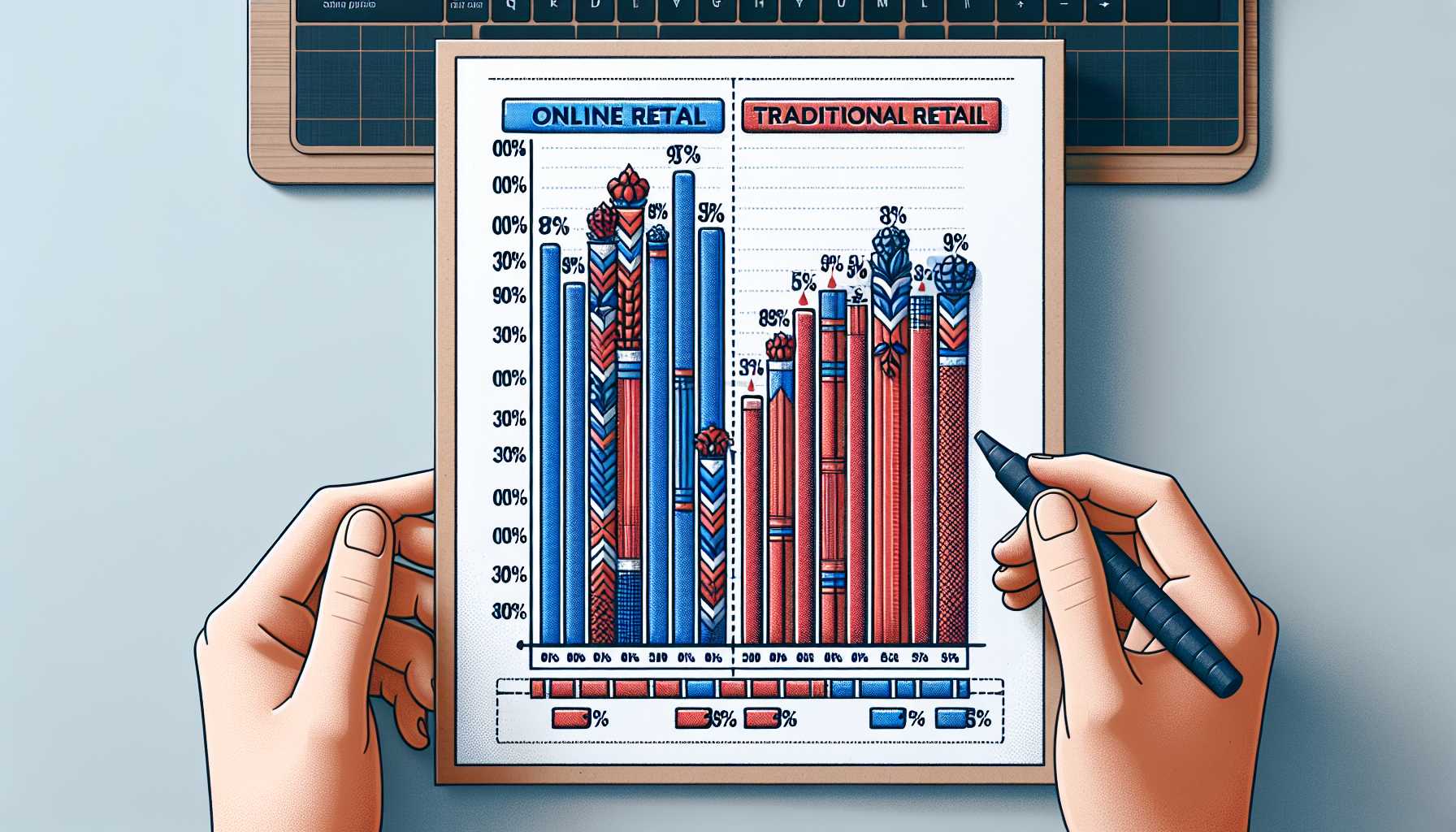Online vs. Traditional Retail in China: A Market Share Showdown
The Chinese retail landscape is undergoing a dramatic transformation, with e-commerce rapidly gaining ground on traditional brick-and-mortar stores. But just how big is the online vs. traditional retail market share in China? Let’s delve into the numbers.
#
The Rise of E-commerce
China is the world’s largest e-commerce market, accounting for over 50% of global online retail sales. In 2022, the online retail market in China reached a staggering **US$2.7 trillion**, representing a **32.8%** year-on-year growth. This phenomenal growth is driven by several factors, including:
* **Rising internet and smartphone penetration:** China boasts over 1 billion internet users and 900 million smartphone users, creating a massive online consumer base.
* **Convenience and accessibility:** E-commerce platforms offer a convenient and accessible way to shop, allowing consumers to browse and purchase products from anywhere at any time.
* **Competitive pricing and promotions:** Online retailers often offer competitive prices and attractive promotions, making them a more appealing option for budget-conscious consumers.
* **Growing middle class:** China’s rapidly growing middle class has a higher disposable income and is increasingly turning to online shopping for a wider variety of products.
#
Traditional Retail Still Holds Its Ground
Despite the impressive growth of e-commerce, traditional retail still holds a significant market share in China. In 2022, the traditional retail market was valued at **US$4.9 trillion**, accounting for **67.2%** of the total retail market. This dominance can be attributed to:
* **Established infrastructure:** China has a vast network of physical stores, offering consumers a familiar and convenient shopping experience.
* **Importance of physical interaction:** For certain product categories, such as apparel and electronics, consumers prefer to physically examine and try out products before purchasing.
* **Preference for personal service:** Many Chinese consumers value the personal service and interaction they receive in traditional retail stores.
#
The Future of Retail in China
The future of retail in China is likely to see a **convergence of online and offline channels**. E-commerce giants like Alibaba and JD.com are expanding their physical presence, while traditional retailers are embracing digital technologies to enhance their customer experience. This omnichannel approach is expected to provide consumers with greater convenience, choice, and value.
Here’s a table summarizing the market share of online vs. traditional retail in China:
| Year | Online Retail Market Share | Traditional Retail Market Share |
|—|—|—|
| 2022 | 32.8% | 67.2% |
| 2021 | 27.2% | 72.8% |
| 2020 | 24.9% | 75.1% |
Conclusion
The Chinese retail market is dynamic and evolving, with both online and traditional channels playing significant roles. While e-commerce is experiencing rapid growth, traditional retail remains a dominant force. The future is likely to see a hybrid model that combines the strengths of both online and offline channels to provide consumers with the best possible shopping experience.

